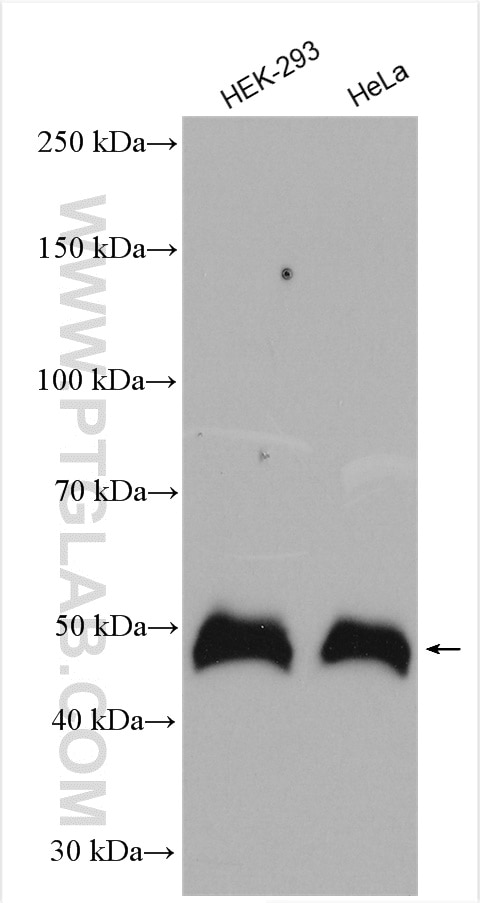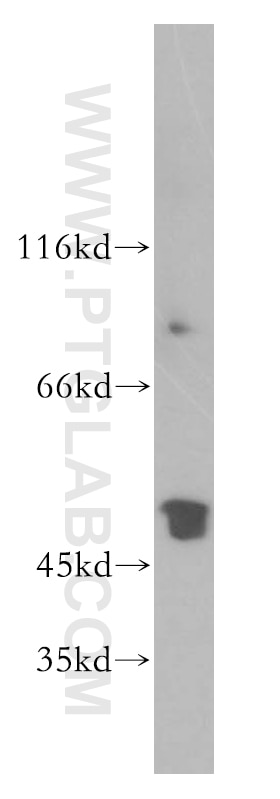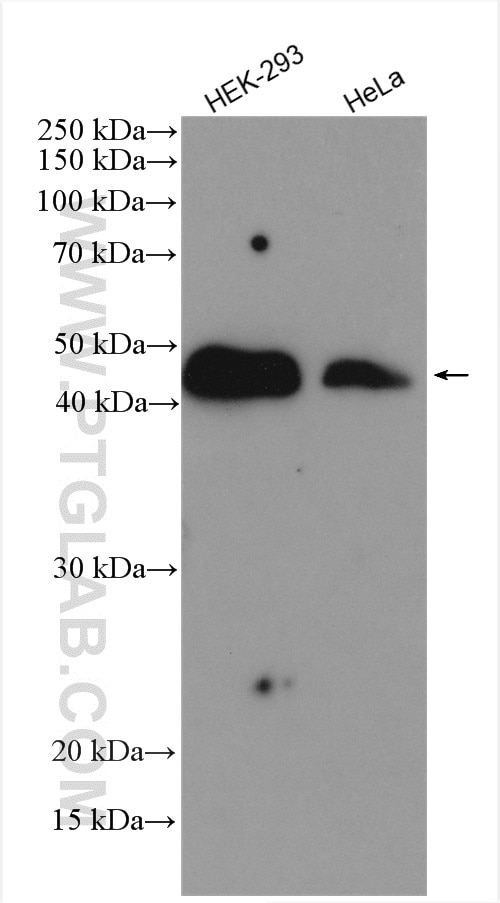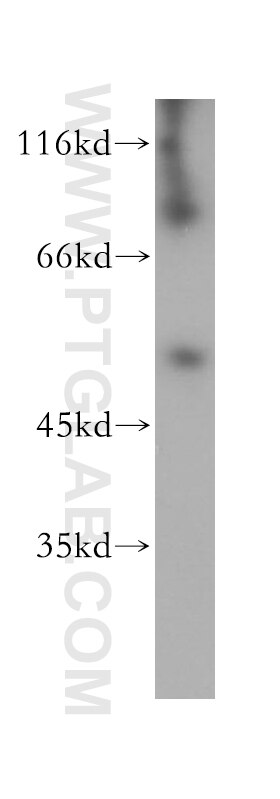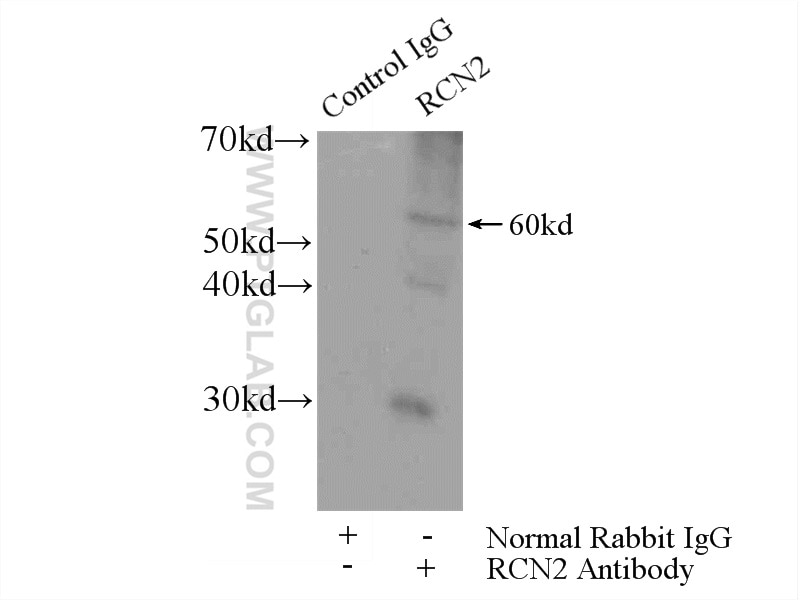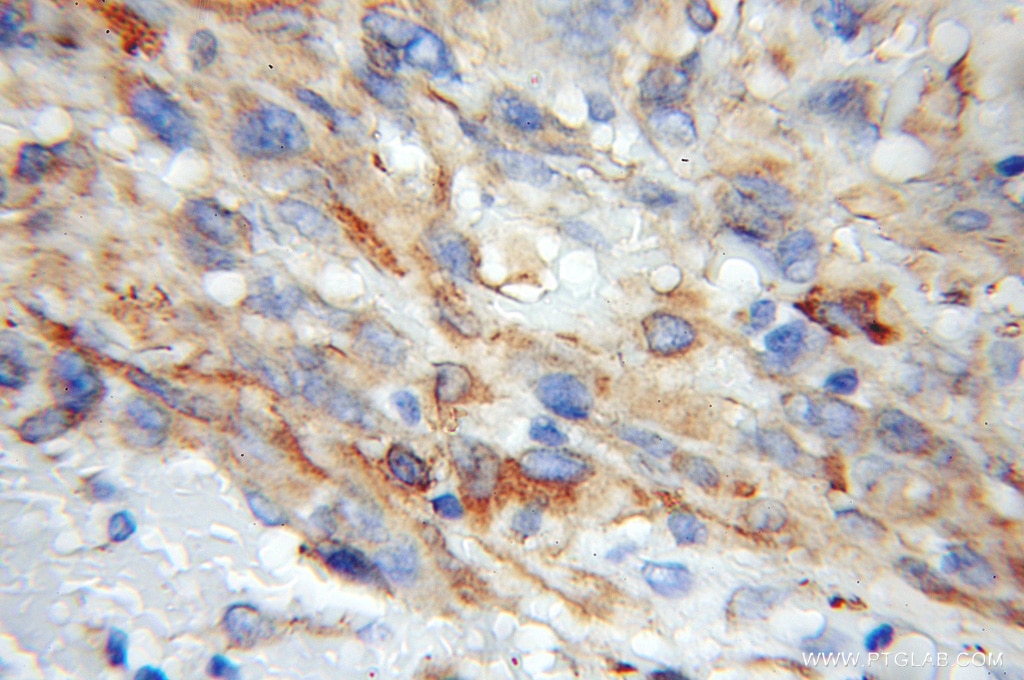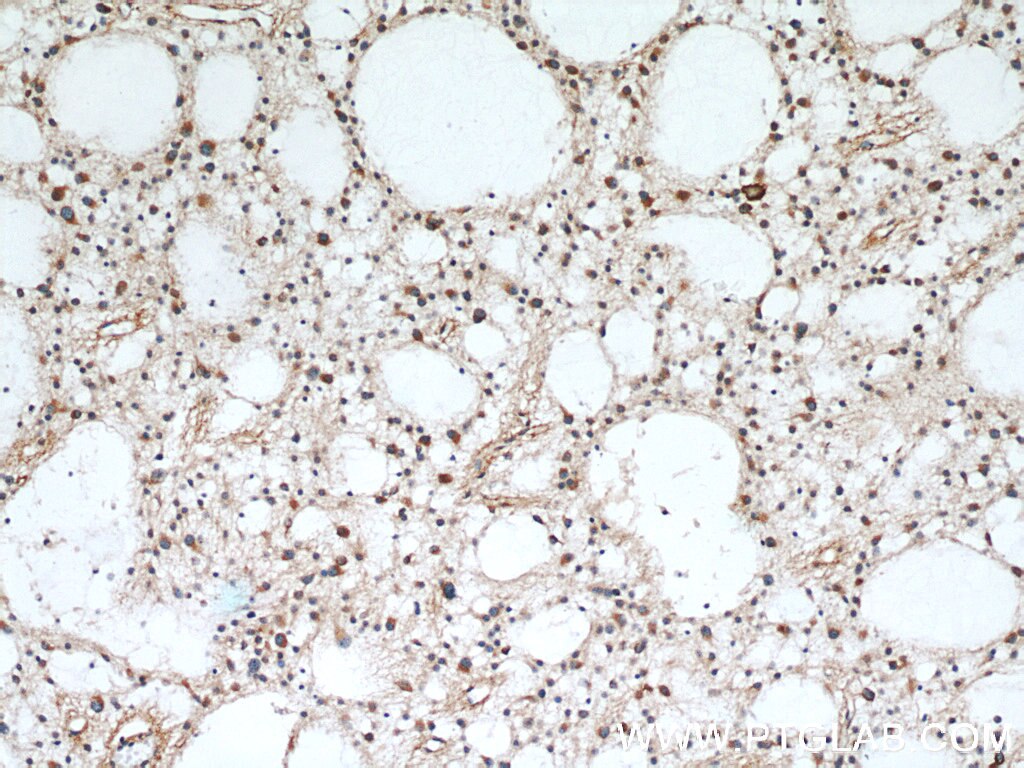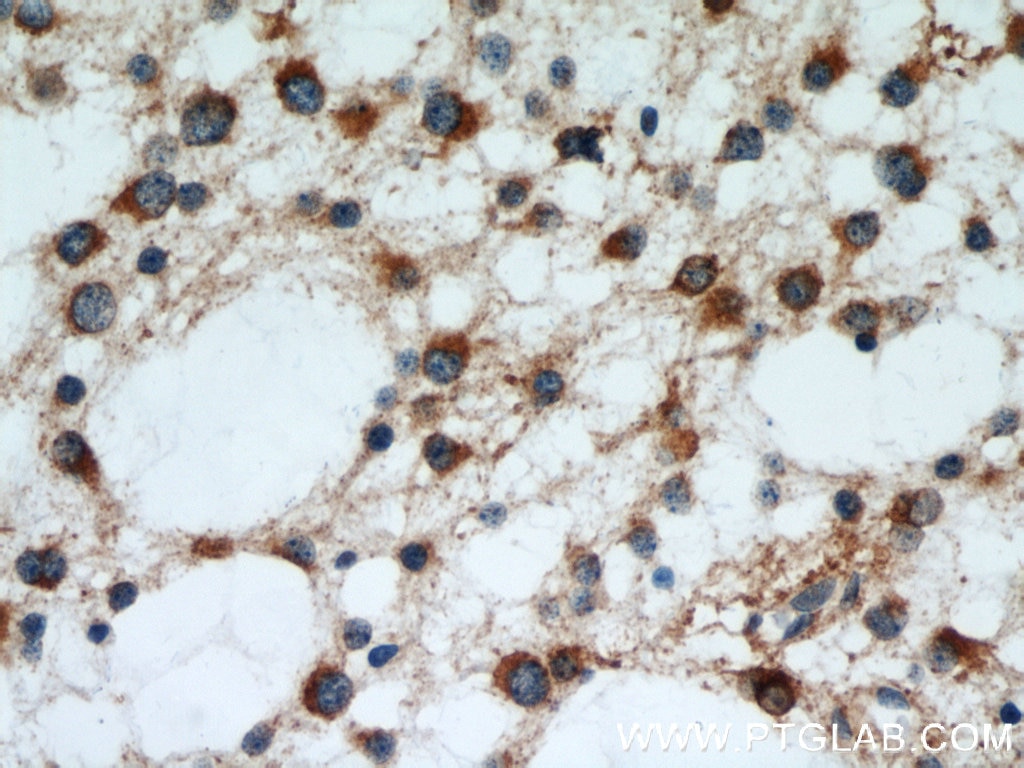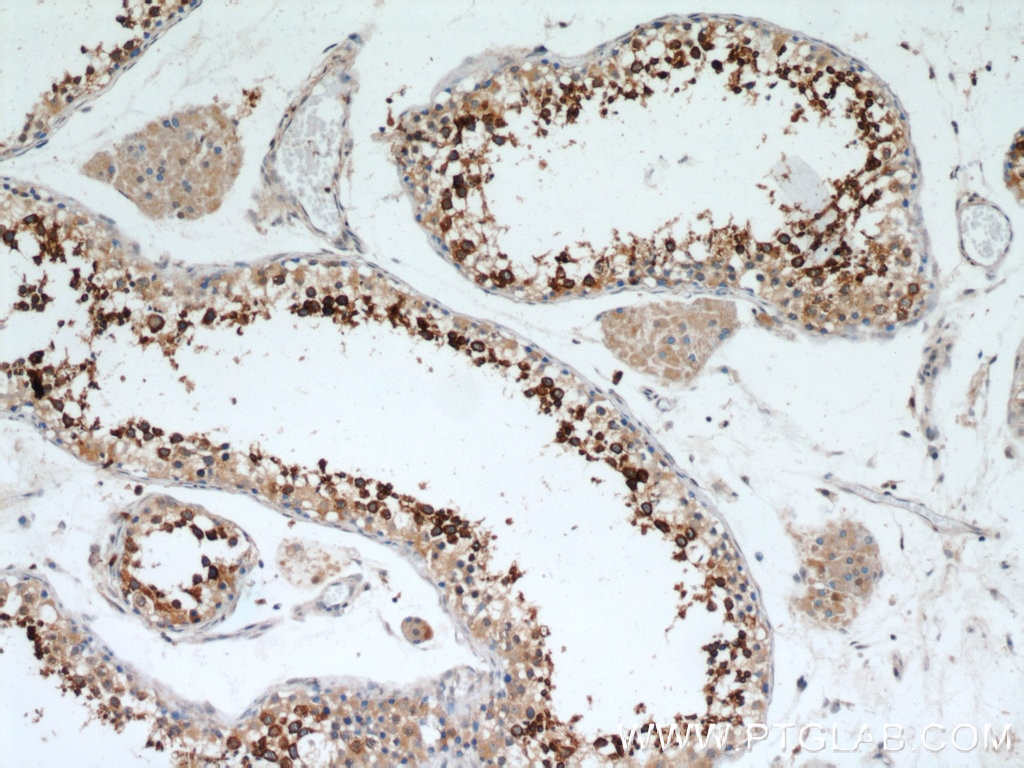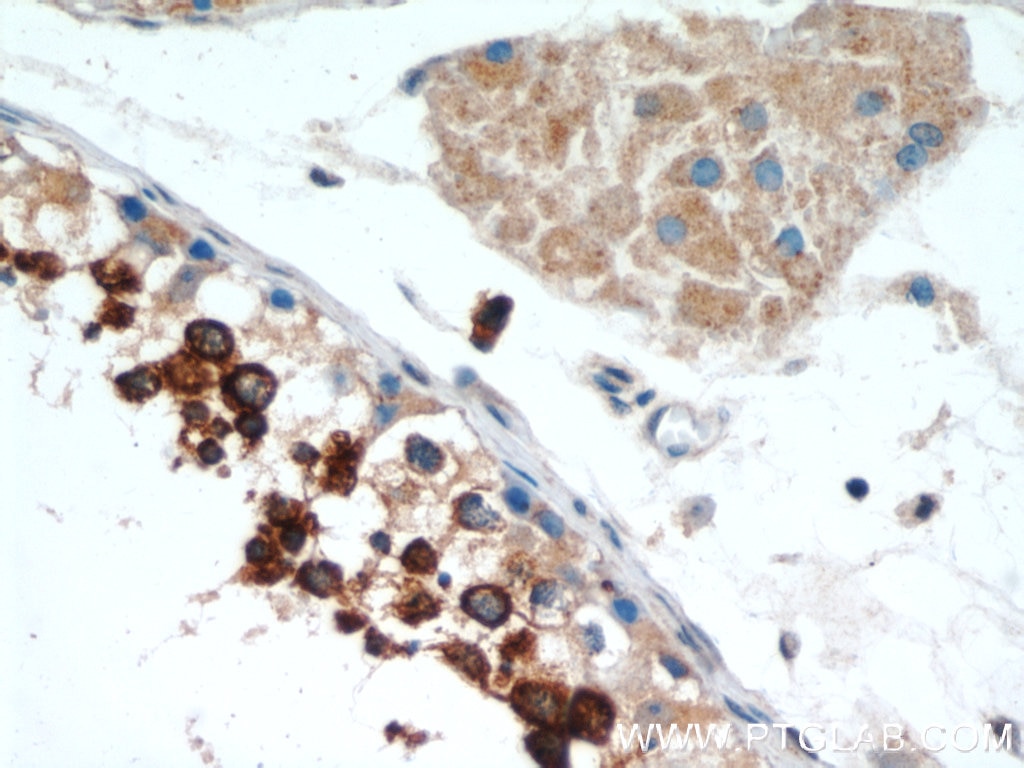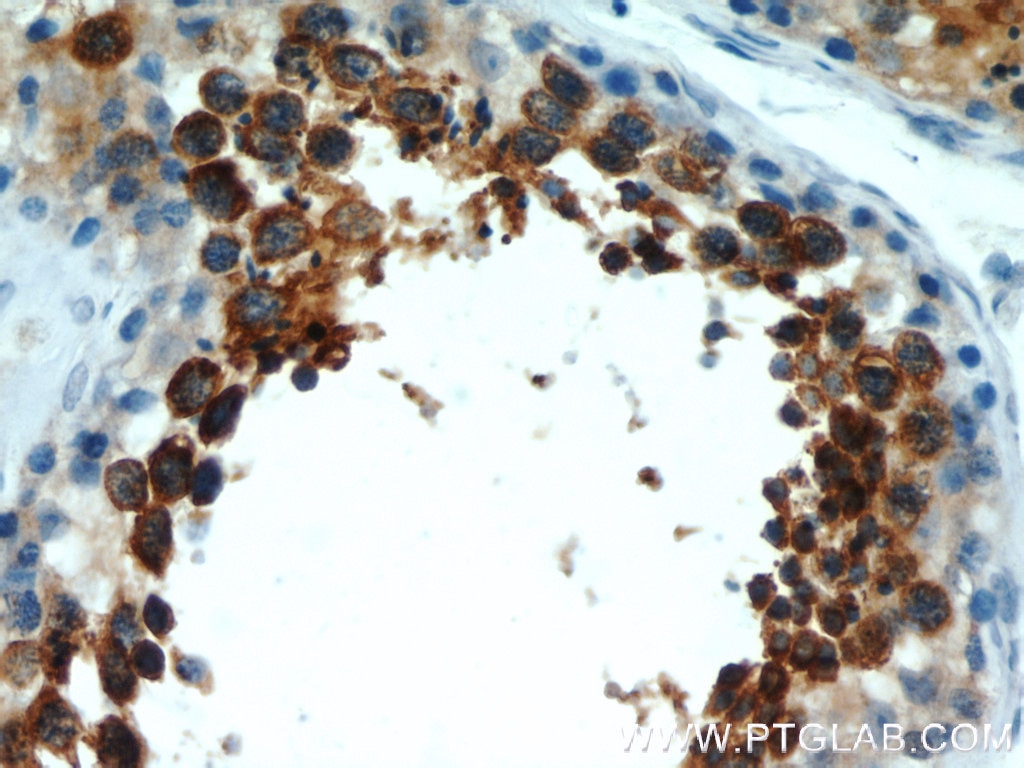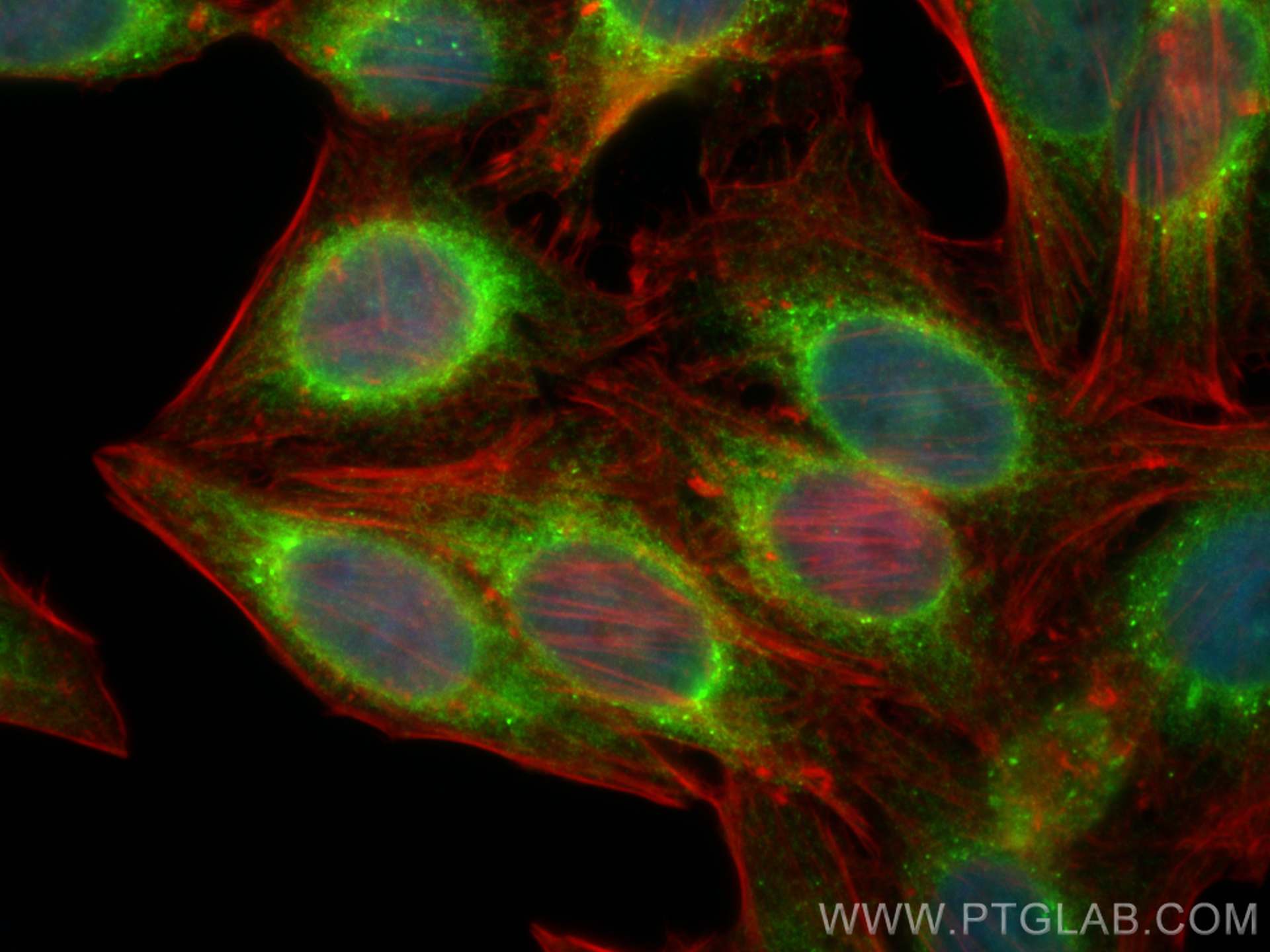- Featured Product
- KD/KO Validated
RCN2 Polyklonaler Antikörper
RCN2 Polyklonal Antikörper für WB, IHC, IF/ICC, IP, ELISA
Wirt / Isotyp
Kaninchen / IgG
Getestete Reaktivität
human, Maus, Ratte
Anwendung
WB, IHC, IF/ICC, IP, CoIP, ELISA
Konjugation
Unkonjugiert
Kat-Nr. : 10193-2-AP
Synonyme
Geprüfte Anwendungen
| Erfolgreiche Detektion in WB | HEK-293-Zellen, HeLa-Zellen, humanes Hirngewebe, Mauslungengewebe |
| Erfolgreiche IP | Mauslungengewebe |
| Erfolgreiche Detektion in IHC | humanes Gliomgewebe, humanes Hodengewebe Hinweis: Antigendemaskierung mit TE-Puffer pH 9,0 empfohlen. (*) Wahlweise kann die Antigendemaskierung auch mit Citratpuffer pH 6,0 erfolgen. |
| Erfolgreiche Detektion in IF/ICC | HepG2-Zellen, HeLa-Zellen |
Empfohlene Verdünnung
| Anwendung | Verdünnung |
|---|---|
| Western Blot (WB) | WB : 1:1000-1:4000 |
| Immunpräzipitation (IP) | IP : 0.5-4.0 ug for 1.0-3.0 mg of total protein lysate |
| Immunhistochemie (IHC) | IHC : 1:20-1:200 |
| Immunfluoreszenz (IF)/ICC | IF/ICC : 1:350-1:1400 |
| It is recommended that this reagent should be titrated in each testing system to obtain optimal results. | |
| Sample-dependent, check data in validation data gallery | |
Veröffentlichte Anwendungen
| KD/KO | See 3 publications below |
| WB | See 10 publications below |
| IHC | See 6 publications below |
| IF | See 5 publications below |
| CoIP | See 1 publications below |
Produktinformation
10193-2-AP bindet in WB, IHC, IF/ICC, IP, CoIP, ELISA RCN2 und zeigt Reaktivität mit human, Maus, Ratten
| Getestete Reaktivität | human, Maus, Ratte |
| In Publikationen genannte Reaktivität | human, Maus, Ratte |
| Wirt / Isotyp | Kaninchen / IgG |
| Klonalität | Polyklonal |
| Typ | Antikörper |
| Immunogen | RCN2 fusion protein Ag0247 |
| Vollständiger Name | reticulocalbin 2, EF-hand calcium binding domain |
| Berechnetes Molekulargewicht | 37 kDa |
| Beobachtetes Molekulargewicht | 55 kDa |
| GenBank-Zugangsnummer | BC004892 |
| Gene symbol | RCN2 |
| Gene ID (NCBI) | 5955 |
| Konjugation | Unkonjugiert |
| Form | Liquid |
| Reinigungsmethode | Antigen-Affinitätsreinigung |
| Lagerungspuffer | PBS with 0.02% sodium azide and 50% glycerol |
| Lagerungsbedingungen | Bei -20°C lagern. Nach dem Versand ein Jahr lang stabil Aliquotieren ist bei -20oC Lagerung nicht notwendig. 20ul Größen enthalten 0,1% BSA. |
Hintergrundinformationen
Reticulocalbin 2 (RCN2) is a Ca(2+)-binding protein that is specifically localized in the endoplasmic reticulum (ER). It is also termed ERC-55, i.e. ER calcium-binding protein of 55 kDa. It is a single copy gene and is encoded by an approximately 1900-base mRNA, which shows a ubiquitous expression pattern. The protein comprises an amino-terminal signal sequence followed by six copies of the EF-hand Ca2+ binding motif.
Protokolle
| PRODUKTSPEZIFISCHE PROTOKOLLE | |
|---|---|
| WB protocol for RCN2 antibody 10193-2-AP | Protokoll herunterladen |
| IHC protocol for RCN2 antibody 10193-2-AP | Protokoll herunterladenl |
| IF protocol for RCN2 antibody 10193-2-AP | Protokoll herunterladen |
| IP protocol for RCN2 antibody 10193-2-AP | Protokoll herunterladen |
| STANDARD-PROTOKOLLE | |
|---|---|
| Klicken Sie hier, um unsere Standardprotokolle anzuzeigen |
Publikationen
| Species | Application | Title |
|---|---|---|
Nat Med Chemical corrector treatment ameliorates increased seizure susceptibility in a mouse model of familial epilepsy. | ||
Cell Metab A mechanosensitive lipolytic factor in the bone marrow promotes osteogenesis and lymphopoiesis. | ||
Proc Natl Acad Sci U S A Stk40 links the pluripotency factor Oct4 to the Erk/MAPK pathway and controls extraembryonic endoderm differentiation.
| ||
Elife Live-cell mapping of organelle-associated RNAs via proximity biotinylation combined with protein-RNA crosslinking. | ||
Elife Proteomic mapping of cytosol-facing outer mitochondrial and ER membranes in living human cells by proximity biotinylation. | ||
Am J Cancer Res YY1-mediated reticulocalbin-2 upregulation promotes the hepatocellular carcinoma progression via activating MYC signaling. |
